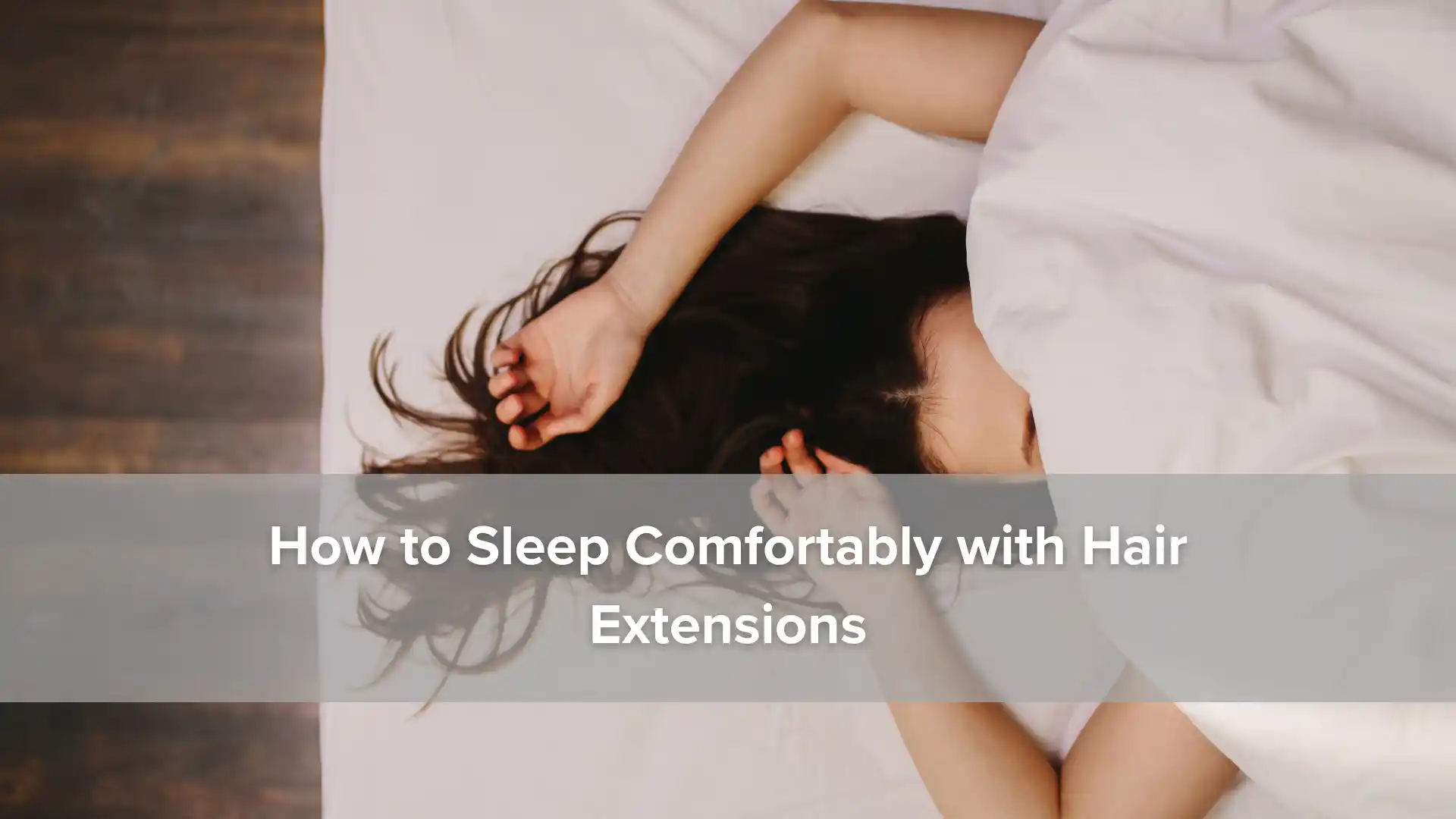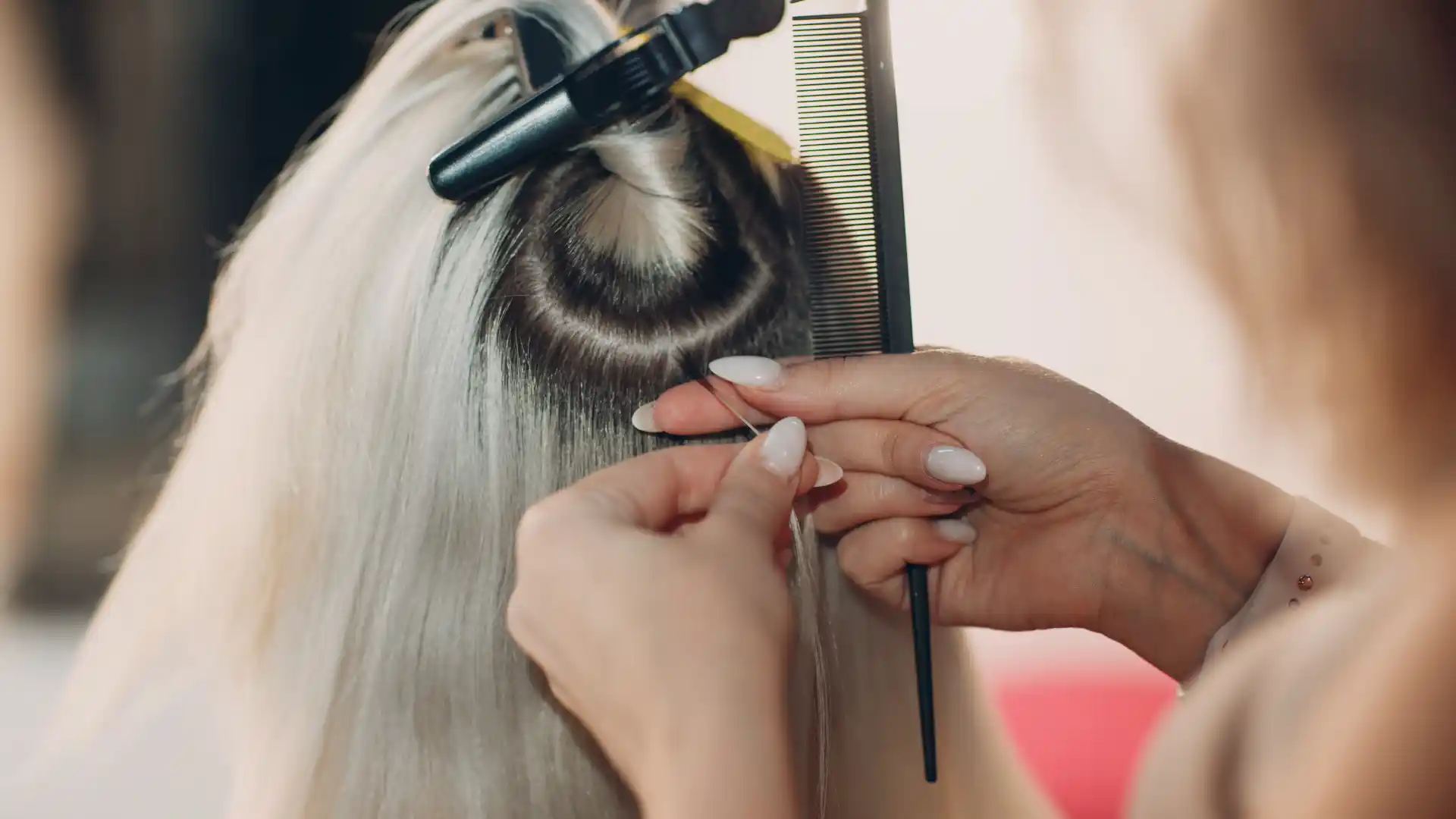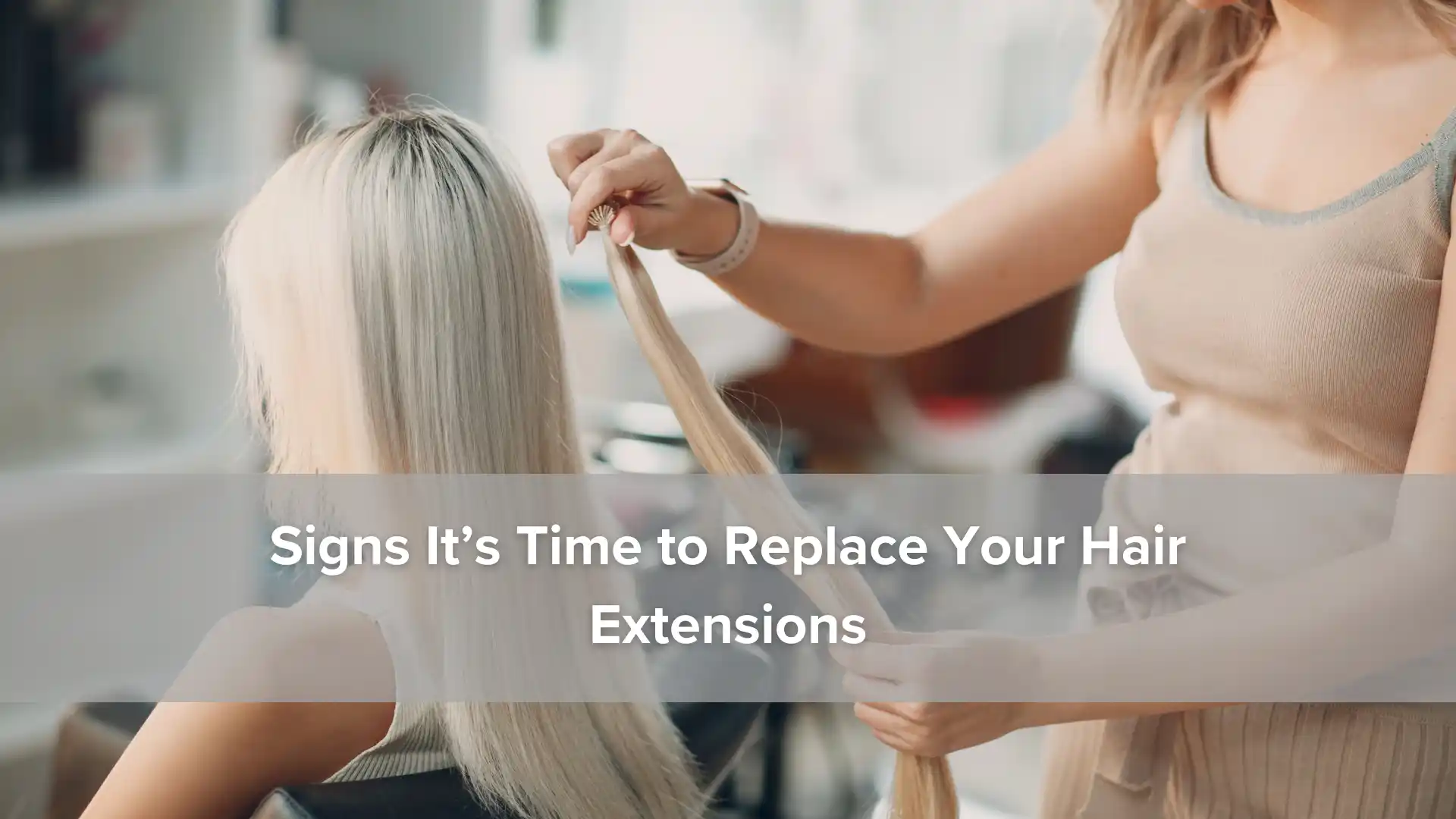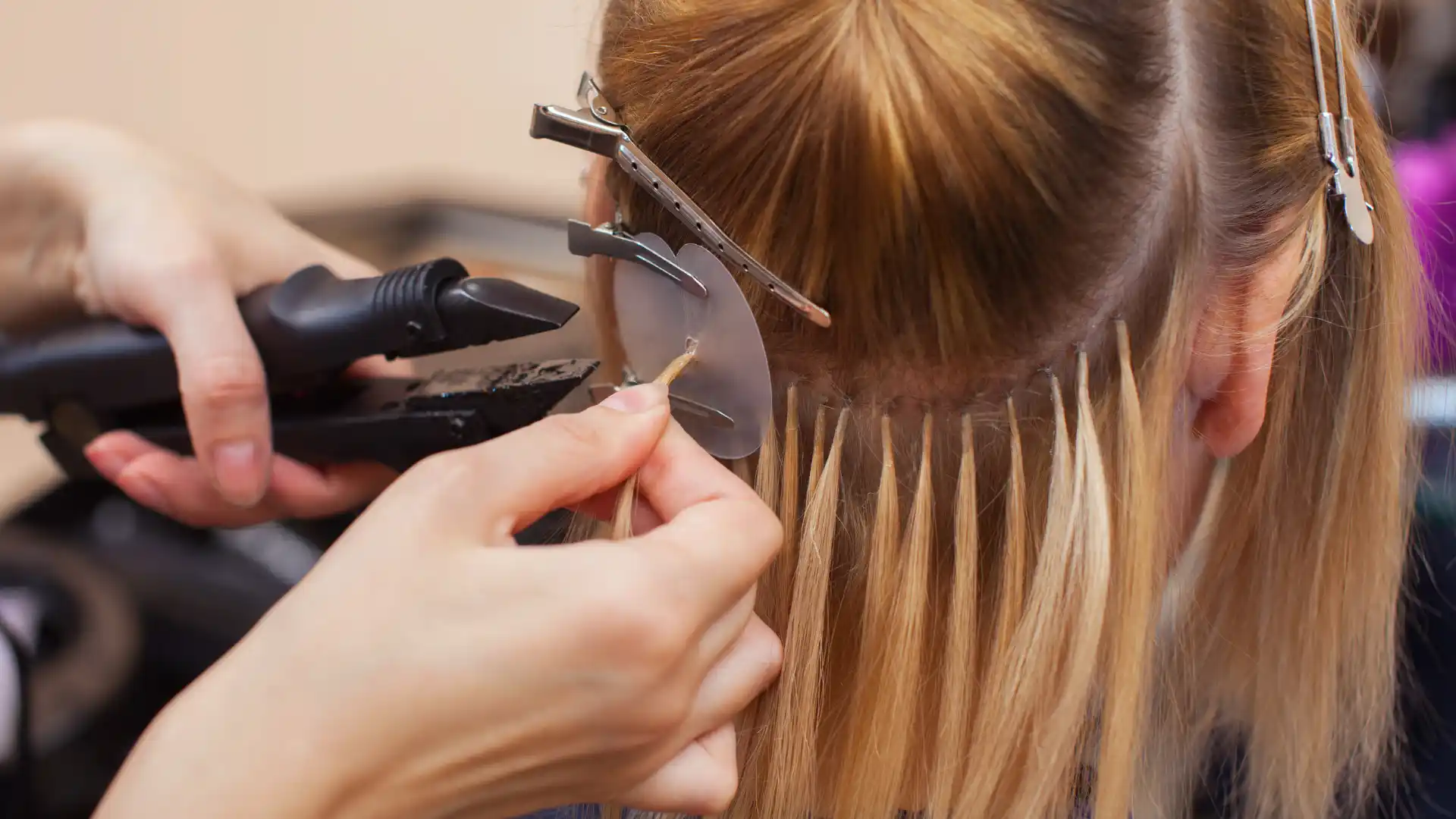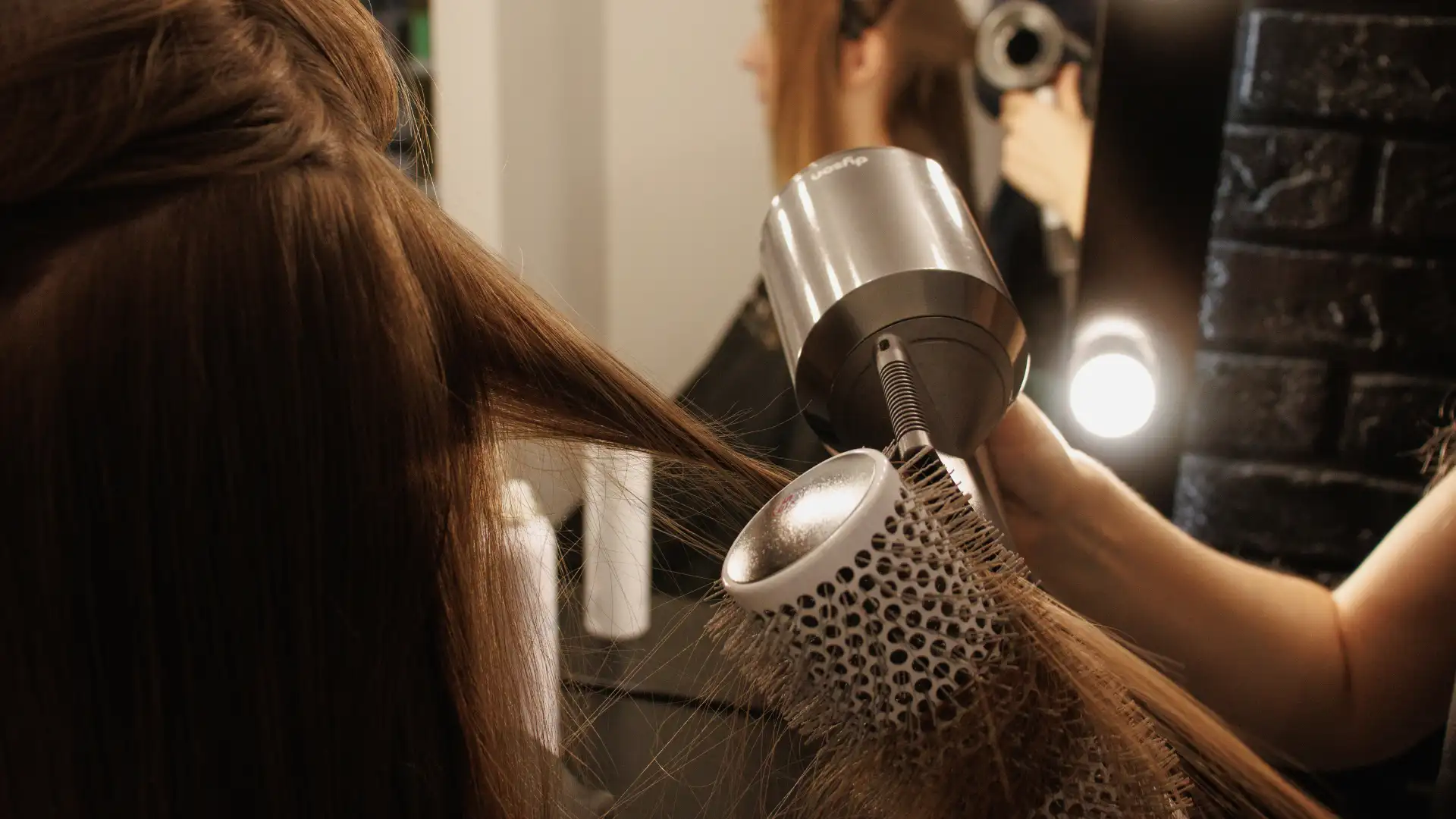Extensions are a fantastic way to add body, length, and style to your hair, but they require careful maintenance if you want them to look fabulous for as long as possible. Part of that maintenance includes nighttime care. Not only can your extensions tangle, dry out, and begin shedding if you sleep on them wrong, but they can also be uncomfortable.
Learning how to sleep with hair extensions can be a game-changer for your look, your wallet, and your sleep hygiene—and Therapy Hair Studio is here to help you do it.
Why Sleeping with Hair Extensions the Right Way Matters
Careful hair extension maintenance is crucial for making the most of your investment, as the lifespan of your extensions depends quite a bit on how well you care for them—even after you go to sleep. Tossing and turning on your extensions can put stress on both them and your natural hair, leading to tangling, shedding, breakage, and scalp discomfort over time.
Fortunately, there are some simple solutions to these issues. Adjusting your nighttime routine with hair extension maintenance in mind can preserve the quality of your extensions, protect your natural hair, and reduce your morning haircare routine.
Adjusting Care Based on Extension Type
Different styles of hair extensions require slightly different nighttime strategies. Here’s how you can care for your hair after bed, based on the hair extensions you use.
Hand-Tied Extensions
Hand-tied extensions are known for their durability, but they can still use some extra care before bed to keep them looking healthy and beautiful for as long as possible. Use a wide-toothed or boar-bristle brush to gently detangle, starting from the ends and working upward. Consider braiding hair at night with a loose braid or low ponytail with a soft scrunchie for tangling prevention.
Tape-In Extensions
Friction from your pillow can loosen the adhesive on your tape-ins over time, and moisture can wear away at it. Using a silk pillowcase or satin bonnet to reduce friction and ensure that your hair is totally dry before bed can help maintain the quality of your extensions and extend their lifespan.
Keratin Bonds
Keratin bond, or fusion, extensions need to be handled extra gently. Brush before bed with a gentle brush, and consider protective hairstyles like loose braids or low ponytails that don’t create tension at the hair root. These little tweaks to your hair extension care routine also double as some nighttime frizz control.
Clip-In Extensions
Clip-ins should always be removed before bed. Leaving them in overnight can place unnecessary stress on your roots and shorten the lifespan of the extensions unnecessarily. Store them in a breathable box or bag before bed to keep them tangle-free and well-protected until it’s time to use them again.
Sew-In Extensions
Sew-in extensions are stitched into your natural hair, making them one of the durable, secure types of extensions. However, sleeping with sew-ins still requires some careful maintenance. To protect your extensions overnight, gently brush to detangle, then tie your hair in a loose braid or cover it with a silk or satin bonnet. This prevents pillow friction and helps maintain moisture.
What to Avoid When Sleeping with Hair Extensions
Regardless of the style of hair extensions you have, there are certain things you should avoid at all costs if you want to prevent nighttime damage. Those things include the following:
- Sleeping with Wet Hair: Hair is more fragile when wet, and extra moisture can weaken the bonds or adhesive that holds your extensions together. Always let your hair dry out completely before going to bed, and if you use a blow dryer, keep it on cool or medium setting.
- Using a Cotton Pillowcase: They may be comfortable enough to you, but cotton pillowcases create friction on your sensitive extensions overnight, causing them to tangle, frizz, dry out, and wear down. Opting for a silk or satin pillowcase or wrapping your hair in bonnet before bed can help minimize friction, protect your extensions, and keep you comfortable.
- Tight Hairstyles: Tight buns, high ponytails, and other restrictive hairstyles create tension on your scalp and at the extension attachment points. This can cause scalp discomfort, tension headaches, hair breakage, or even traction alopecia. Opt for a loose low braid, ponytail, or soft twist with a soft scrunchie instead.
- Skipping Regular Maintenance: Even the most dedicated at-home care routine can only go so far. Schedule regular appointments with your stylist to touch up and adjust your extensions, and they will stay looking great for a far longer time.
Schedule Your Appointment Today
Your extensions should make you feel fabulous, not frustrated. Using these nighttime care tips can go a long way, but you still need regular maintenance from your stylist to make the most of your investment. Contact Therapy Hair Studio today to schedule your appointment.






